Springy noodles seasoned with a tangy, spicy, savoury sauce, Liang Pi (Cold skin noodles) is one of the most popular street foods in the north-west of China.
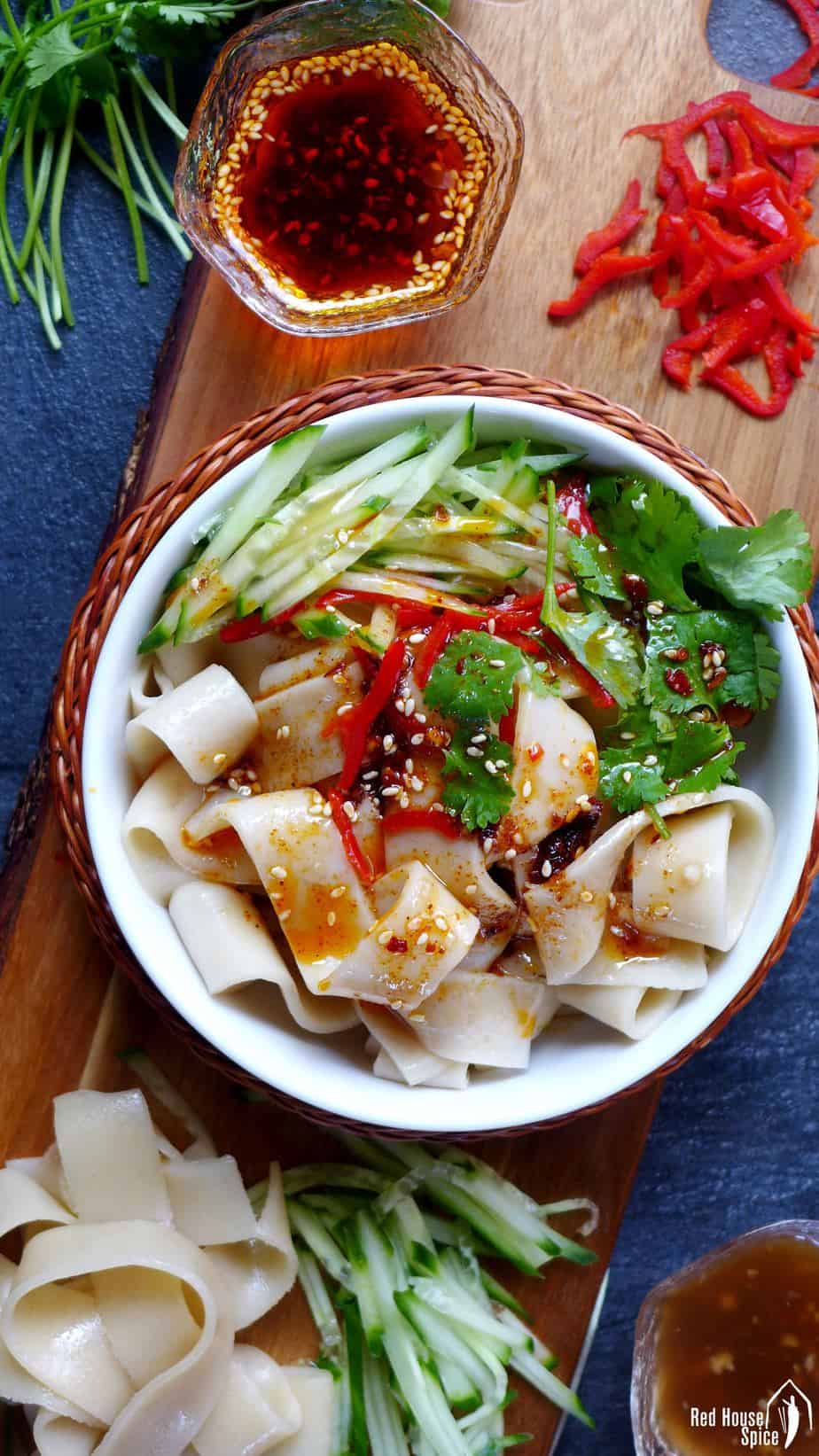
A few days ago, I chatted with my friend Heddi (blogger of Cuisine Helvetica) about childhood snacks. Her memories involve lot of sweet treats, whereas mine are all about savoury food.
I told her that after school I often ran to a little street food stall with my friends and spent my pocket money on a bowl of Liang Pi (凉皮, aka cold skin noodles), a tangy, savoury, cold dish available all year round in my hometown. It was very satisfying!
Unusual noodles with springy texture
Although translated as “cold skin noodles” in English, Liang Pi is very different from regular noodles. The mixture of flour and water is steamed into a thin “pancake” then cut into strips. Springy and elastic, Liang Pi has a very unique and appealing texture.
As a popular street food in north-west regions of China, Liang Pi has numerous versions in terms of flour type (wheat or rice), preparation method and sauce. You could easily find two different types of Liang Pi in two neighbouring towns.
Local debates about which one tastes best are endless. For me, they are all scrumptious in their own way and I always enjoy searching for new inspiration on how to prepare it in my own kitchen.
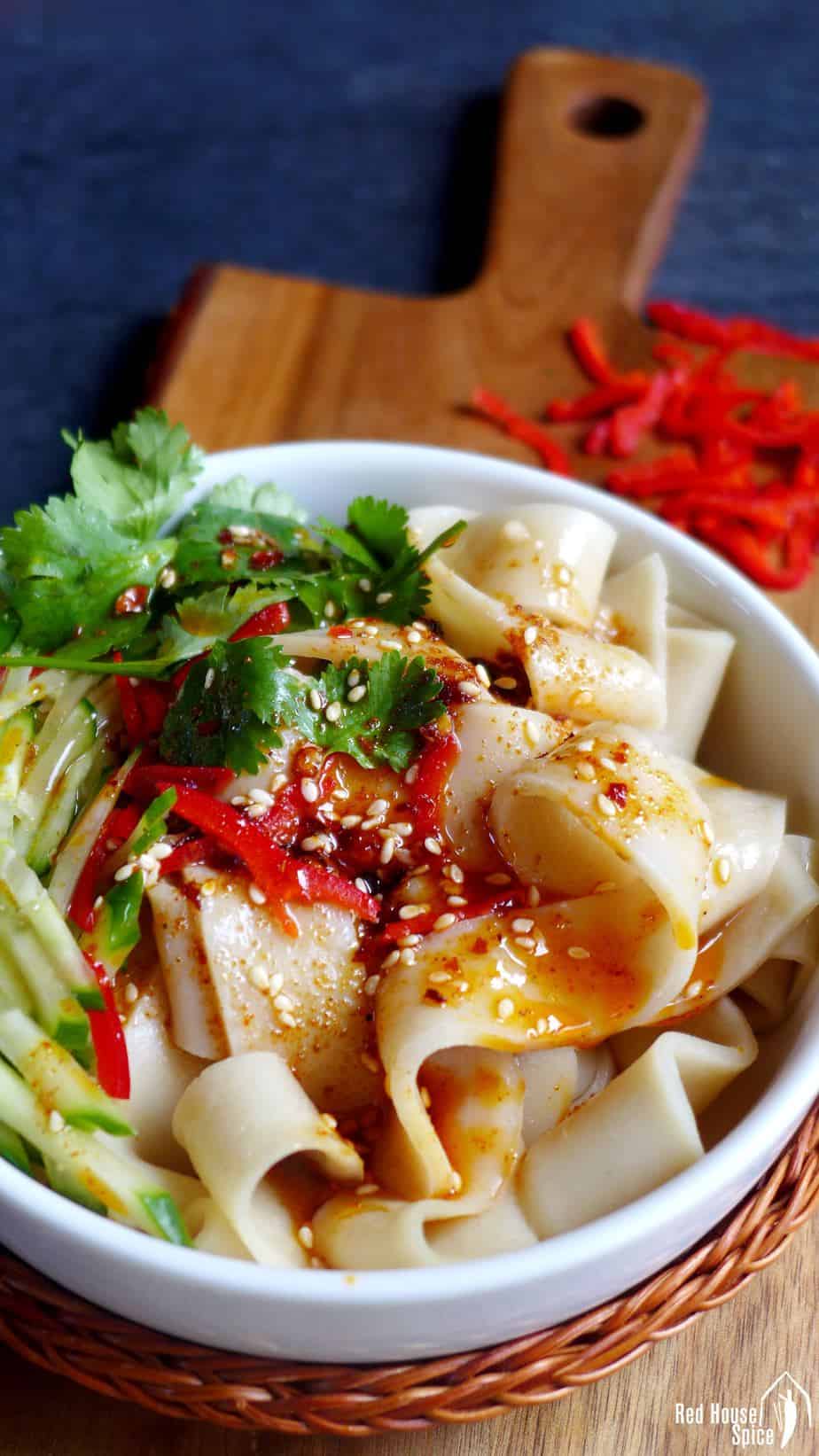
The traditional “dough rinsing” method
The most common type of Liang Pi is made of wheat flour. Traditionally, a very particular method is applied in preparation:
- Make a dough with flour and cold water.
- “Rinse” the dough in plenty of water until it becomes much smaller and the water turns white (saturated with starch). Remove the dough and leave the cloudy water to rest overnight.
- The following day, spoon out the clear water that appears on top then steam the remaining paste little by little in shallow plates. I have to admit that the “rinsing” part is quite labour-intensive!
The simple way: just mix flour and water
However, don’t be intimidated by the “authentic” method! What I share with you is a simpler version which skips the entire dough making and rinsing process.

Mix flour and water then leave to rest. That’s it! The finished texture is almost as good as the traditional Liang Pi (just a little bit less elastic if you like).
Since I started cooking it this way, Liang Pi becomes a regular treat in our Red House and I’m trying to make it part of the “snack memory” of my own children.
Tips on cooking it more efficiently
When the flour and water batter is ready to use, you need to pour it into a shallow tray (a few spoonful at a time) then leave the tray floating on boiling water to steam. To make this procedure less time consuming, I have two tips for you:
- Use a non-stick tray. You only need to coat it with a thin layer of oil for the first sheet of noodle. The following ones won’t stick to the surface (Find out how to choose the right tray in recipe box below).
- Use 2 trays to rotate. A smooth workflow of steaming and cooling will save you half of the time required (More detail on how it works in recipe box below).
Three indispensable ingredients to season
There are many ways to season a bowl of Liang Pi. However, three ingredients are indispensable:
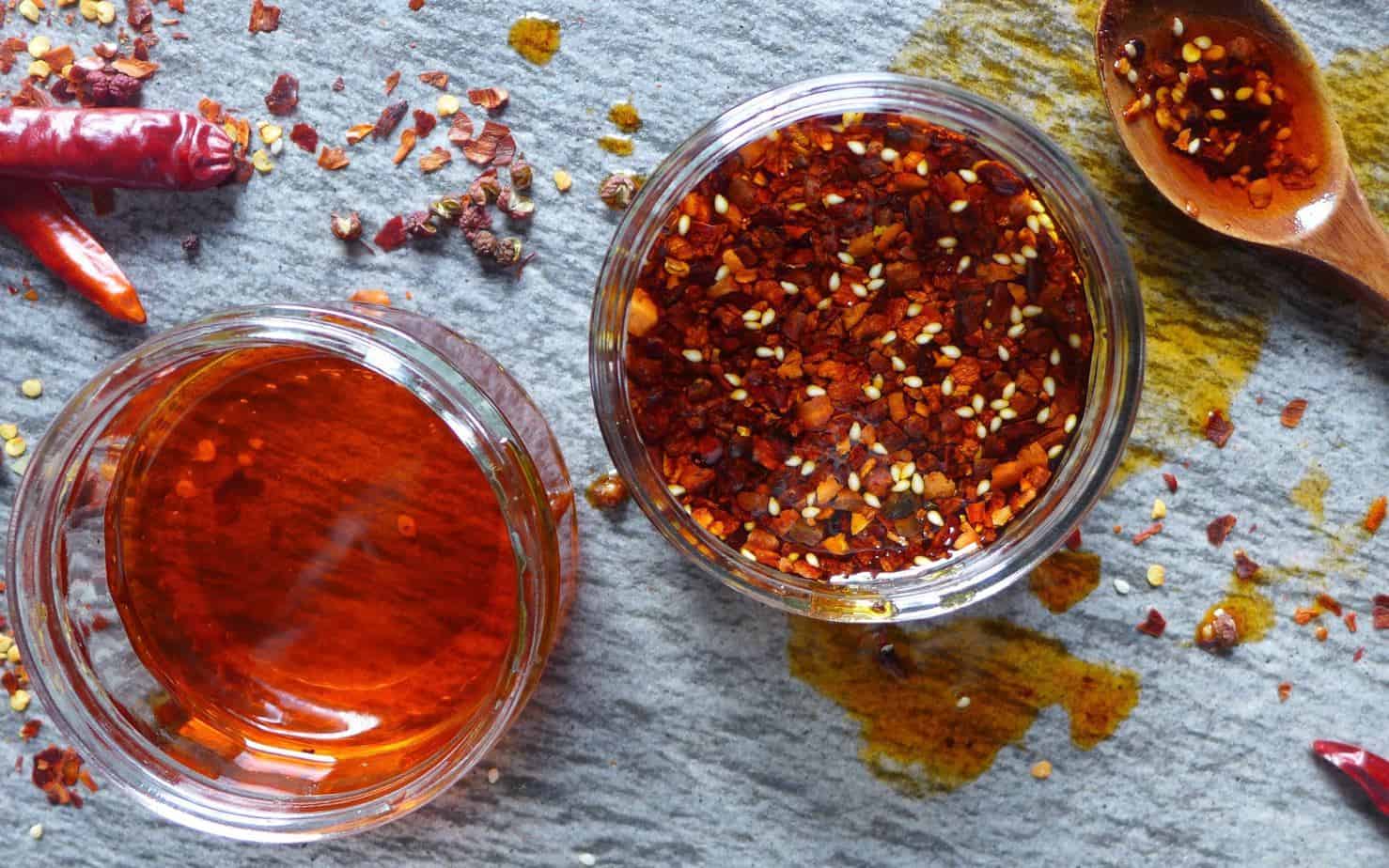
- Chinese chilli oil
- Chinese black rice vinegar
- Minced garlic
I have written a post on how to make Chinese chilli oil in which I include a comprehensive version and a simple version as well.
Make spiced water to enhance the flavour
In addition, I like the idea of “spiced water (香料水)” which is widely used for Liang Pi in the region where I grew up (the centre of Gansu province in China).
Cook Chinese cinnamon (cassia cinnamon), star-anise, bay leaf, fennel seeds and Sichuan peppercorn in simmering water for a few minutes then leave to cool. This “spiced water” will give the dish a more sophisticated taste.
I also like garnishing Liang Pi with vegetables (e.g. cucumber, bean sprouts, fresh chilli, etc.) and herbs (e.g. coriander, spring onion, garlic sprout, etc.) to make it healthier and more visually appealing.
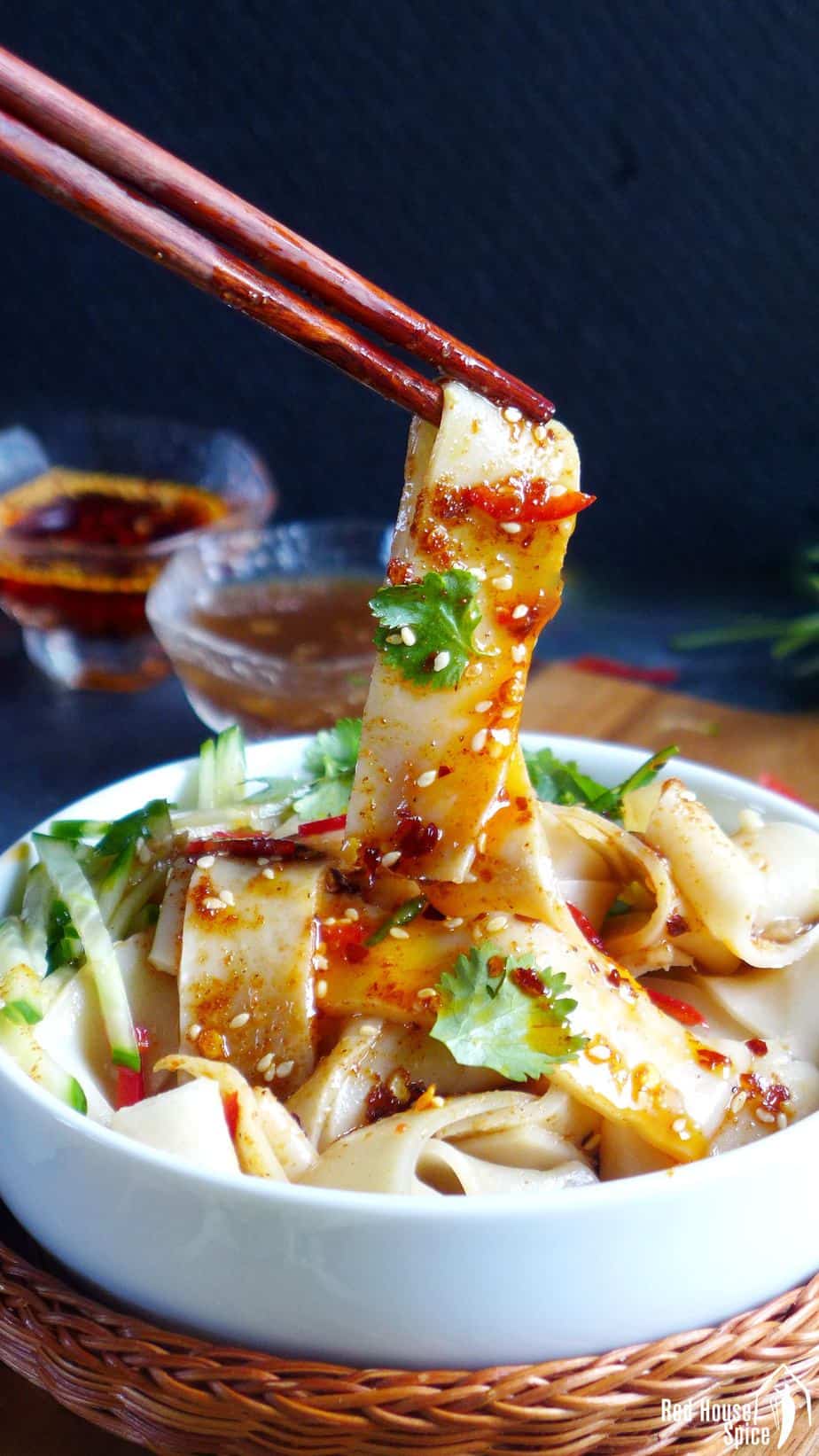
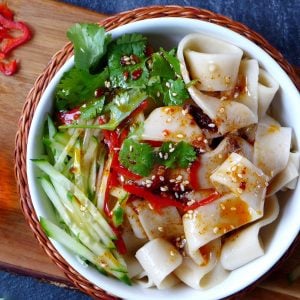
Liang Pi: Cold skin noodles (凉皮)
Ingredients
For the noodles
- 300 g all purpose flour - 2 cups
- 700 ml water - 3 cups
- 1 pinch salt
- 1 tablespoon cooking oil - for greasing the pans
For the sauce
- 1 piece Chinese cinnamon/cassia cinnamon
- 1 star-anise
- 1 bay leaf
- 1 pinch fennel seeds
- 10 Sichuan peppercorns
- 120 ml water - ½ cup
- 1 teaspoon corn starch/potato starch - mixed with 1 teaspoon of water
- 1 pinch salt
- 1-2 tablespoon black rice vinegar
- 1-2 cloves garlic - minced
- 1 tablespoon Chinese chilli oil - or to taste
- ½ teaspoon toasted sesame oil
You also need:
- cucumber - cut into thin strips or grated
- coriander - chopped
- fresh chilli - chopped (optional)
- sesame seeds
Instructions
Prepare the batter
- Mix flour, water and salt until smooth. Through a sieve, pour the mixture into a bowl then cover with cling film. Keep refrigerated for at least 8 hours or overnight.
- Remove the bowl from the fridge. You will see a layer of clear water on top. Carefully spoon out the water, then stir the batter very well.
Steam the noodles
- Brush a thin layer of oil onto a small, light baking tray / sheet pan (see note 1). Pour in some batter to thinly cover the tray.
- Bring water to a boil in a wok (or a deep frying pan) over a high heat. Gently place the tray on the water to float. Cover with a lid. Cook for around 2 minutes until you see bubbles appear and the noodle is not sticky when touched by hand.
- Remove the tray and float it on cold water (e.g. in a sink) to cool. Peel the noodle off the tray then transfer to a chopping board. Brush a thin layer of oil on its surface. Repeat the procedure to finish the rest of the batter. Lay noodles one on top of another (see note 2).
Make the dressing
- Put Chinese cinnamon, star-anise, bay leaf, fennel seeds, Sichuan peppercorn and water in a sauce pan. Simmer for 5 minutes then add corn starch and water mixture. Remove from the heat when it becomes a bit thick. When completely cool, discard all the spices then add black rice vinegar and minced garlic.
Assemble the noodles
- Slice the noodles into strips of desired width then put into serving bowls. Garnish with cucumber, coriander, fresh chilli (if using) and sesame seeds. Pour the cooked sauce, Chinese chilli oil and sesame oil on top.
NOTES
- They should be small enough to fit into your wok (or deep frying pan);
- They should be light enough to float on the water;
- They should not have a loose base (e. g. if you use a quiche tray).
- It’s better to use a non-stick tray. You only need to brush oil once. If your tray does not have a non-stick coating, you will need to brush it with oil each time before you pour in the batter.
NUTRITION
NUTRITION DISCLOSURE: Nutritional information on this website is provided as a courtesy to readers. It should be considered estimates. Please use your own brand nutritional values or your preferred nutrition calculator to double check against our estimates.
Several of my readers have noted that my blog posts made them feel nostalgic. I can definitely relate to that sentiment. But the good news is that many of my childhood (or hometown) related foods can easily be cooked at home. It always gives me great pleasure to share my recipes with you all.


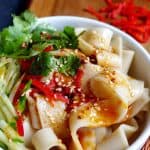
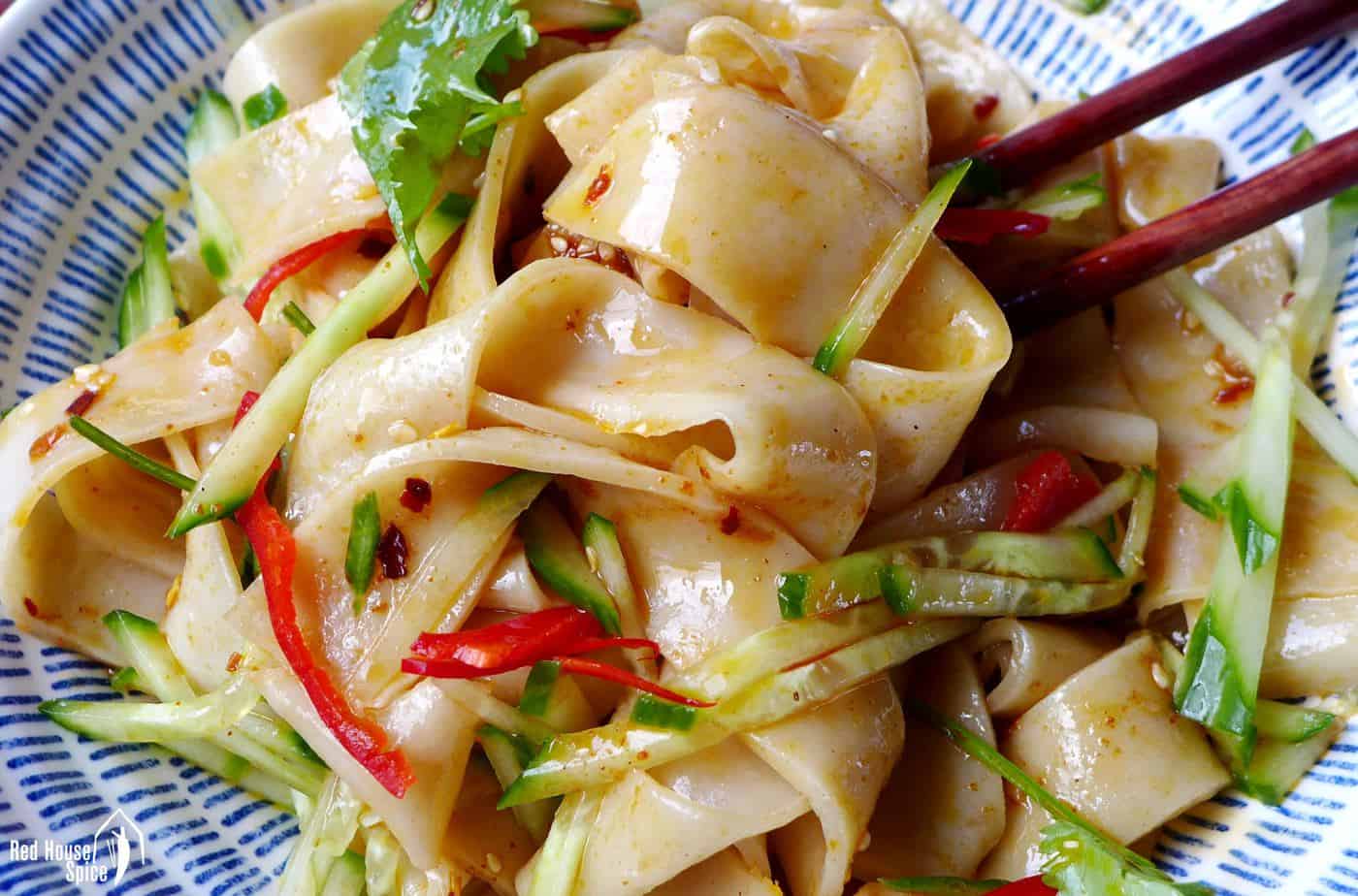


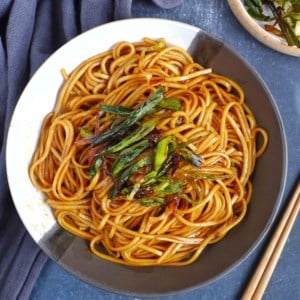


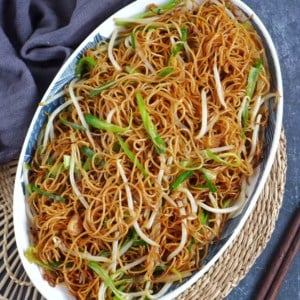
Thank you for this lovely recipe! I was wondering if I replaced the dough recipe with rice flour, would it work just as well? (I’m allergic to wheat)
Many thanks!
Yes you can use the same method to make Rice Flour Liang Pi. Mix 200g rice flour, 60g corn starch and 530g water (the quantity may vary slightly) together and then leave it to set for 20 minutes or so. Remember to stir the mixture very well each time before you pour it into the tray for steaming. Happy cooking!
I can serve liang pi noodles to my family regularly now. Thanks for the easy recipe! In my experience, the extra noodles that got put away in the fridge overnight really lost the elasticity, so will need to try leaving it out, for at least a few hours anyways.
Thank you for letting me (and other readers) know. I always finished it all so never had anything left for the fridge.
Just had an amazing meal! I couldn’t get the Chinese chili oil to work, so I simply used my own chili oil recipe. The liang pi noodles came out perfectly. Elastic and zestful. This is a fantastic way to cook liang pi without having to wash the flour dough. It was very time consuming still but the moment when I served it to my family it was all worth it! Thanks for creating this recipe!
Wow! So happy to know that you cooked perfect Liangpi. It’s my great pleasure to share the recipe. Look forward to hearing more about your adventure in the kitchen.
多谢,Wei!
I know your recipe says that I would need to leave it in the fridge for 8 hours or more, but would a day or two be too long? Thanks.
Hi! I don’t think it’s going to be a problem leaving it in the fridge for a day or two (although I never did it myself). As long as the batter doesn’t go off, it should be fine. Let me how it goes!
Good luck!
Hello Wei, after I mix the flour with water, can I leave it in the fridge for a day or two if I’m not able to cook it right away? Thanks!
This dish will bring back a lot of childhood memory. It’s not just the flavor. I’m sure the process will be enjoyable as well. Many thanks.
You are more than welcome Zhien! I can definitely relate to your feeling. That is why I loved writing about this recipe. I had my childhood in mind: watching my dear mum rotating two trays in a steamy little kitchen…
Hi there,
Thanks so much for the recipe, I’ve made it twice now… In preparation for mother’s day.
However, each time that I’ve made it, it’s sticky and not the slippery texture I remember liang pi to be… Why is that? I used all purpose flour, it looks great but the texture is off.
Two possible reasons: 1. The batter is too thin. You probably didn’t get rid of enough clear water after resting the batter. 2. Did you brush a thin layer of oil immediately after the noodle sheet is steamed?
Liang Pi prepared this way shouldn’t be too sticky but its texture is not exactly as slippery as the ones prepared in the traditional way (dough rinsing) which I explained in my post.
Xiexie ni, Wei! I’m so glad I don’t have to wash the flour dough. I can’t wait!
I totally understand! Rinsing the dough can be very time (& energy)-consuming.
Would the noodles be more elastic if I use bread flour instead of all-purpose flour? Thanks!
Absolutely! Bread flour does make it a bit more elastic. I use all-purpose flour for this recipe simply because it’s more commonly available in households and the result is satisfactory. And make sure you cover the wok with a lid when steaming the noodles. They tend to be less elastic when steamed without a lid.
Wei, What a beautiful dish! Nice work! I love these recipes from your childhood. I am always learning something new. And, thanks for the shout out! 😉
Thank you so much Heddi. Sometimes I feel quite emotional writing this kind of posts. All the memories came back to mind.
Good memories, I hope. So wonderful you can share them like this.
What are the chinese name for the ingridients?
Hi! Here are the ingredient list with all the Chinese names:
For the noodles
300g / 2 cups all purpose flour (面粉)
700ml / 3 cups water (水)
1 pinch salt (盐)
1 tablespoon cooking oil (油)
For the sauce
1 small piece Chinese cinnamon (桂皮)
1 star-anise (八角)
1 bay leaf (香叶)
1 pinch fennel seeds (小茴香)
10 Sichuan peppercorn (花椒)
120ml / 0.5 cup water (水)
1 teaspoon corn starch (玉米淀粉)
1 pinch salt (盐)
1-2 tablespoons black rice vinegar (米醋)
1-2 cloves garlic, minced (蒜)
1 tablespoon Chinese chilli oil (油泼辣子)
1/2 teaspoon toasted sesame oil (香油)
You also need:
Cucumber (黄瓜)
Coriander (香菜)
Fresh chilli (辣椒)